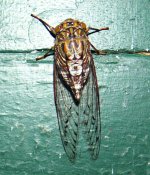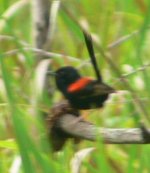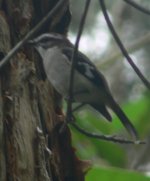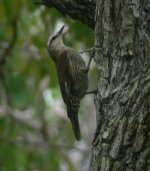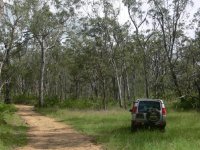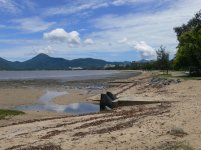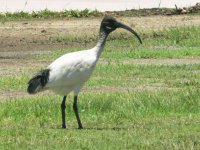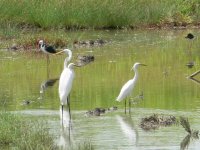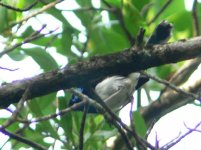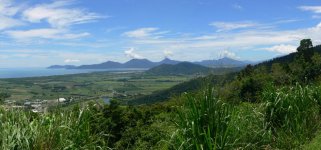John Cantelo
Well-known member
Saturday 18th December
Cassowary House – Cairns Esplanade & Centenary Park (Saltwater Creek) – Barron River
As usual the day started with a potter around Cassowary House which produced all the usual birds. It also produced all the usual butterflies which I've thus far neglected to mention; the impossibly bright electric blue Ulysses Swallowtail (Papilio ulysses) – understandably the symbol of Queensland tourism, the even larger (if more slender) fluorescent green and black Cairns Birdwing (Ornithoptera euphorion) and several more that escaped identification. These large insects brought an unexpected novelty to my rainforest birding, that is the danger of mistaking butterflies flitting around the canopy for small birds. I had also managed to photograph a large cicada the night before which subsequently turned out to be a Green Baron (Psaltoda maginifca) which was only named as recently as 1984. (All the cicadas hereabouts seem to rejoice in exotic names – Red Roarer, Forest Demon, Golden Knight & Black Friday being examples).
Then it was off to Cairns to show Herb and Bobbie the Papuan Frogmouths before they had to catch their flight (Herb & Bobbie that is, not the frogmouths!). The frogmouths performed well, but once again the Lovely Fairy-wrens refused to ‘play ball’. They called well enough, but views were limited to an almost subliminal glance of a small long tailed bird white below and with a bluish head. Good to see them at last, but was it a tickable view?
Another look at the esplanade found the tide to be again rather high. Even so all the expected waders were present (see 9/12), but Phil quickly spotted a small group of small plovers feeding along the near shore – Red-capped Plover. These Kentish-like plovers were something I’d completely forgotten about! A look at the mouth of the Barron River produced a few crested terns (of both species), but little else. Probably the quietest day yet, but perhaps after all the excitement I needed it.
Cassowary House – Cairns Esplanade & Centenary Park (Saltwater Creek) – Barron River
As usual the day started with a potter around Cassowary House which produced all the usual birds. It also produced all the usual butterflies which I've thus far neglected to mention; the impossibly bright electric blue Ulysses Swallowtail (Papilio ulysses) – understandably the symbol of Queensland tourism, the even larger (if more slender) fluorescent green and black Cairns Birdwing (Ornithoptera euphorion) and several more that escaped identification. These large insects brought an unexpected novelty to my rainforest birding, that is the danger of mistaking butterflies flitting around the canopy for small birds. I had also managed to photograph a large cicada the night before which subsequently turned out to be a Green Baron (Psaltoda maginifca) which was only named as recently as 1984. (All the cicadas hereabouts seem to rejoice in exotic names – Red Roarer, Forest Demon, Golden Knight & Black Friday being examples).
Then it was off to Cairns to show Herb and Bobbie the Papuan Frogmouths before they had to catch their flight (Herb & Bobbie that is, not the frogmouths!). The frogmouths performed well, but once again the Lovely Fairy-wrens refused to ‘play ball’. They called well enough, but views were limited to an almost subliminal glance of a small long tailed bird white below and with a bluish head. Good to see them at last, but was it a tickable view?
Another look at the esplanade found the tide to be again rather high. Even so all the expected waders were present (see 9/12), but Phil quickly spotted a small group of small plovers feeding along the near shore – Red-capped Plover. These Kentish-like plovers were something I’d completely forgotten about! A look at the mouth of the Barron River produced a few crested terns (of both species), but little else. Probably the quietest day yet, but perhaps after all the excitement I needed it.




